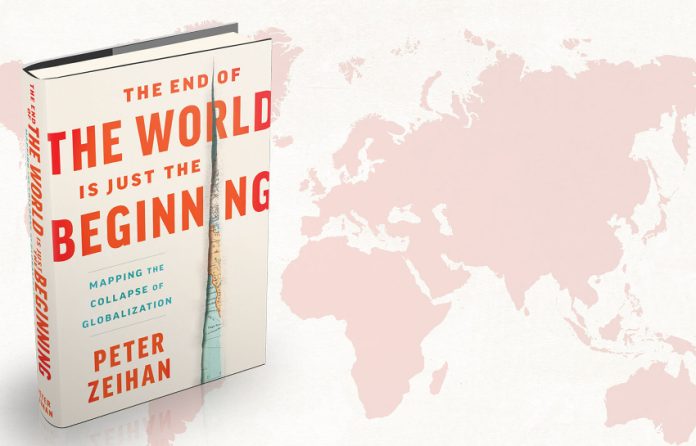Recently my friend Tom gave me a book by Peter Zeihan entitled “The end of the world is just beginning.” It’s a great read — a provocative title with even more provocative conclusions. What motivated Tom to give it to me was Zeihan’s comments and predictions about China, North America, and specifically Mexico as the “end of the world begins.”
As the subtitle says, the book is about “mapping the collapse of globalization” and makes a very compelling case for which countries will be the winners and losers if the reversal of globalization does become a full-fledged reality. In Zeihan’s analysis of the data, the reversal is already undeniably underway and accelerating. Most of us in one way or another are already starting to feel this shift in globalization trends, with words like nearshoring, friend-shoring, localization, and deglobalization increasingly creeping into our vocabularies. But we struggle to understand what exactly does it all mean? Who will be impacted and how? And how quickly will the changes and impacts happen?
Zeihan, in careful detail, describes what key trends to pay attention to and what impact they might have on the future of the world. Although I cannot do justice to the 498 pages of analysis he does in his book in a short column, there are some key takeaways that I think are especially relevant for those of us with an eye on North America. Among the many indicators he researches, demographics, energy production, and food production are near the top of an exhaustive list and stood out to me.
For his analysis of demographics, Zeihan focuses on the birth rate, net migration rate, and average age of the population in each nation. Many countries, including Japan, China, Russia, most of Europe, and parts of southeast Asia have increasingly aging populations (meaning less consumption), with below-replacement birth rates, and low migration levels. This will result in a rapidly declining domestic market, and ultimately declining standards of living for its residents as more people receive government resources than pay into the system.
Much has been written recently about how China’s population is now hitting a troubling negative inflection point. In other countries around the world, leaders are increasingly highlighting the risks and significant negative impacts of such low birth rates and rapidly aging populations on their economies. North America, relatively speaking, is in much better shape than most of the rest of the world in all of these key aspects of demographics.
With respect to both energy and food production, Zeihan focuses his analysis on which countries are net importers versus net exporters as well as the source of the imports. In other words, which countries are more “self-reliant” and which ones depend more on other countries to provide for their food and/or energy.
In his research, countries like China, much of Europe, and parts of Asia are exceptionally reliant (and thus much more vulnerable in a deglobalizing world) on food and energy supplies from other nations. In a hyper-globalized world in which everyone was connected and cooperating, this served these countries well. Going forward, Zeihan is not so convinced, and foresees significant potential disruption and issues.
North America, on the other hand, is extremely self-reliant in both areas and as a result, is relatively at far less risk.
The book goes on to make the argument that the combination of relatively high birth rates, a relatively young population, net positive migration, and food and energy self-reliance position North America to be a huge beneficiary of the impending collapse of globalization. The large population of the region (with still significant room and resources to accommodate many more people), the abundant natural resources, and the in-region lower cost labor of Mexican workers even further bolster Zeihan’s argument that North America will be the undisputed winner as the collapse of globalization accelerates in the years to come.
I was so intrigued by his analysis and the potential for what it could all mean for Mexico that I reached out to Zeihan directly to discuss further.
We talked for nearly an hour and conducted a “deep dive on the collapse of globalization from a Mexico point of view.” Specifically, what does this all mean for Mexico? How real is this opportunity? What does Mexico need to do to capitalize on it? What must Mexico prioritize?
I will share those comments from Peter, along with my thoughts in next week’s column. Stay tuned!
Travis Bembenek is the CEO of Mexico News Daily and has been living, working or playing in Mexico for over 27 years.
